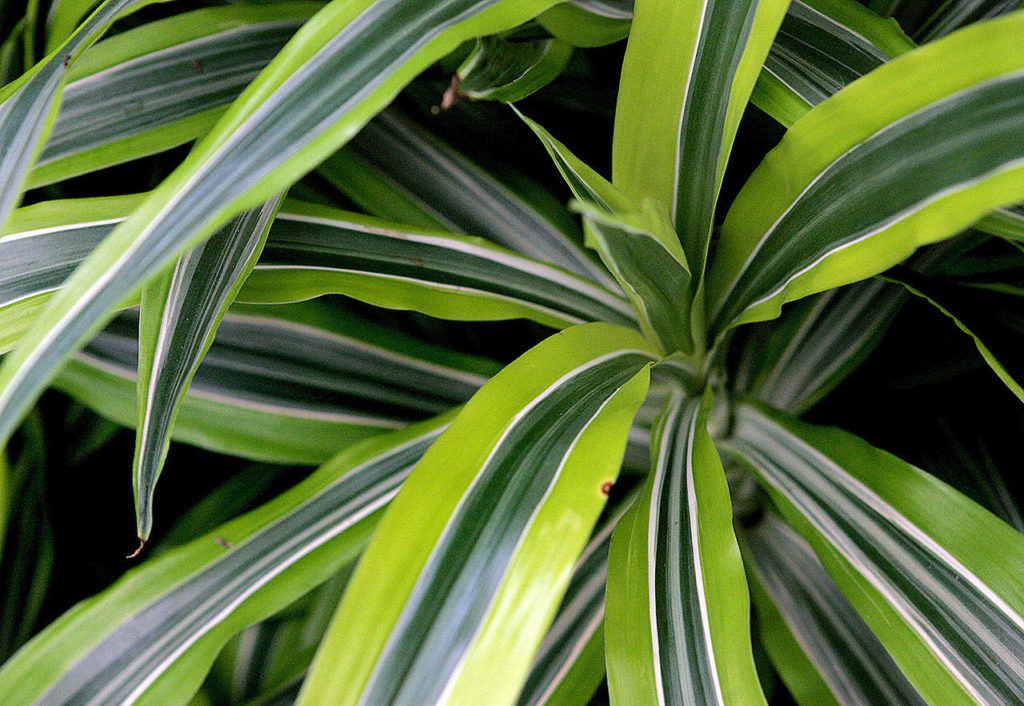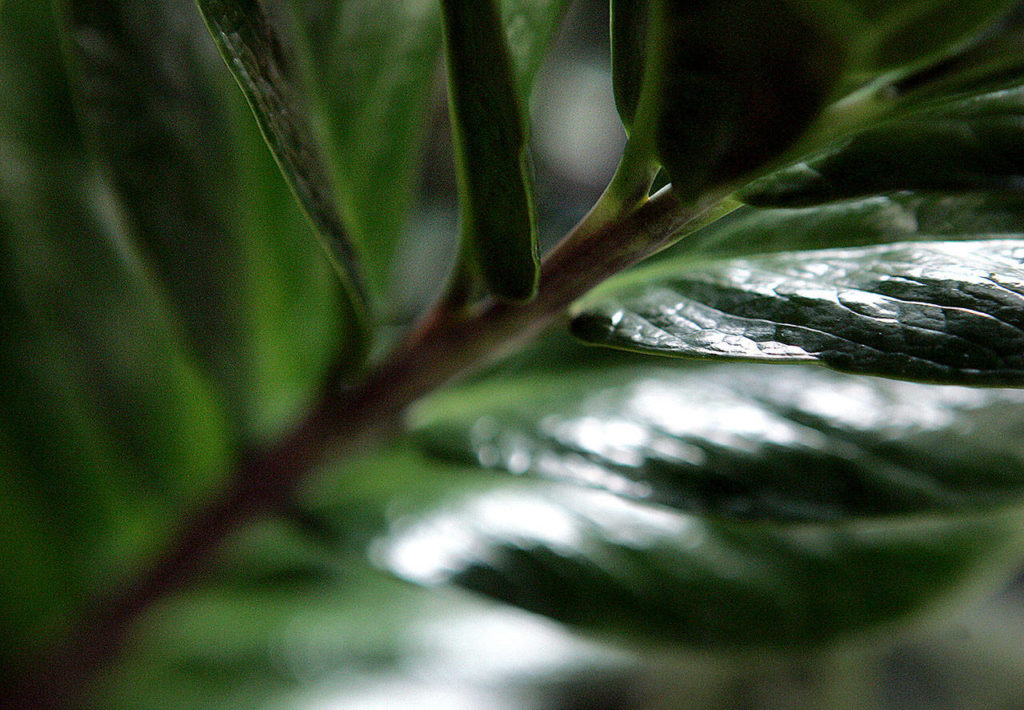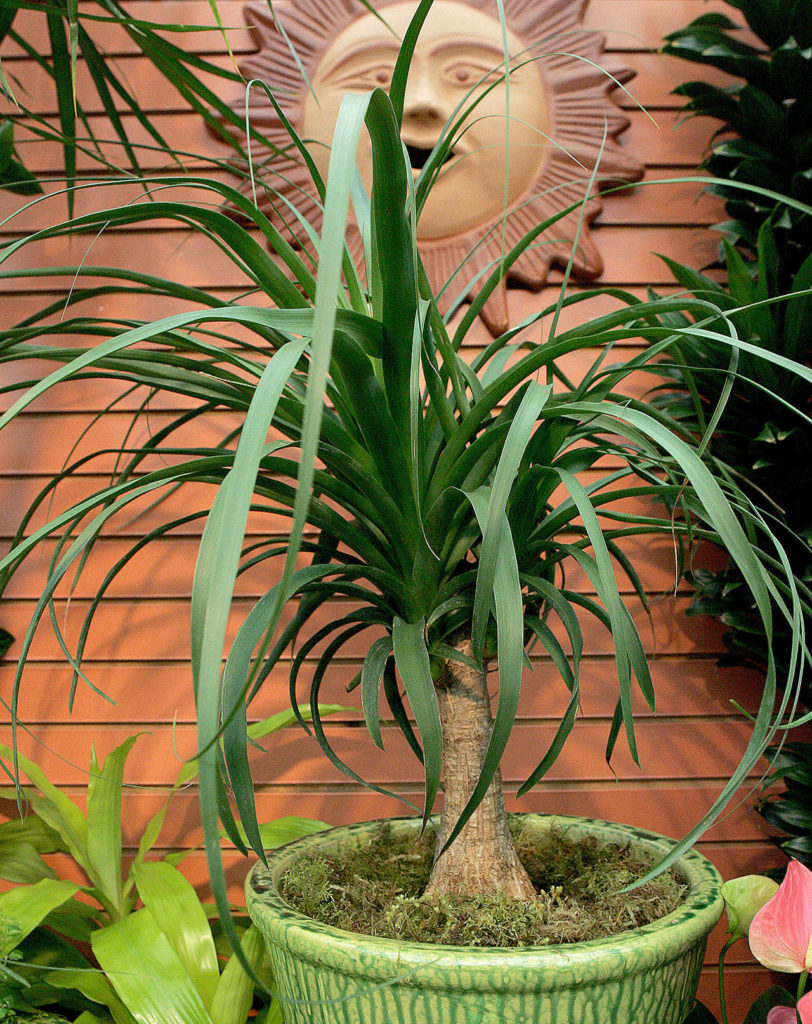The day lilies have faded, and chrysanthemums are stepping up to take their place. Sure, they’ll lend an autumnal backdrop as we sip pumpkin lattes while wearing football jerseys, but then what? Once the leaves have dropped and the coneflowers have become brittle, brown shadows of their former selves, where’s a plant lover to turn?
Indoors.
Studies have shown that indoor plants boost mood, productivity, concentration and creativity. They reduce stress, fatigue, sore throats and colds. And they also clean indoor air by absorbing toxins, increasing humidity and producing oxygen.
But take care: Houseplants, unlike garden plants, are completely reliant on their owners for sunlight and nutrition.
The basics
Water, sunlight, nutrients. These ingredients sound easy enough, but the combination differs from plant to plant.
Generally speaking, too much water can kill any plant — even if you’ve tried to correct your mistake by allowing the plant and soil to dry completely. That’s because waterlogged roots rot, a state that’s difficult to reverse. Too little water can be deadly, as well, but most plants provide warning signs — like wilting — before succumbing to such neglect. Watering at the point of wilt usually avoid catastrophe.
So how much and how often should you water? Environmental conditions — the sunlight and humidity in your home, and the type of potting mix and amendments in the container — play a role. In addition, gauging the moisture level by the soil’s surface can mislead.
Instead of establishing a one-size-fits-all watering schedule, assess plants’ needs every couple of days by inserting your finger deeply into the soil. When the soil is dry at root depth, it’s time to water. Keep in mind, however, this too is a generality. Some plants prefer a consistently moist, but not soggy, soil, while others thrive in soil that dries out before being watered. And unless otherwise recommended, lighten up on watering over winter, when plant growth slows.
The best way to water most plants is to put the pot in the sink (or bathtub or shower, if the container is large) and apply water s-l-o-w-l-y until it runs out the drainage holes in the pot’s bottom. Flushing the soil also helps prevent salt buildup from fertilizers that can stress plants and stunt their growth.
Most of our indoor houseplants are tropical plants that won’t survive winter outdoors in our climate. On their home turf, they are exposed to high humidity that can be difficult to duplicate indoors. Insufficient humidity often manifests as browning leaf tips. Should this happen, trim affected tips with sharp scissors and expose the plant to moisture by misting daily, running a humidifier or placing the pot into a rimmed pan that contains about an inch of pebbles and water (but not so much that the pebbles float); as the water evaporates, it will create a humid microclimate.
Be sure to keep plants away from forced-air heating vents and don’t put them on radiators, which can cause soil and plant-tissue dehydration — even death.
Plants need appropriate sunlight to photosynthesize, or produce food for themselves. A southern exposure offers the brightest light. Eastern and western exposures will provide medium light, while northern exposures probably will produce lots of shadows and, therefore, a lowlight environment. While there are plants that require the brightest exposures possible and others that thrive under office lighting, most do well with lots of indirect light. Keep in mind that even your brightest window may not provide enough sunlight for those with strong light requirements over winter, when sun exposure is at its lowest.
East- and west-facing locations are ideal for most plants, but keep them a foot or two from the brightest windows or place a sheer curtain over windows to filter sunlight.
Flowering houseplants typically are more sensitive to drafts than foliage-only plants, but all can experience ill effects from proximity to a blowing air conditioner, window drafts or an exterior door that is opened often.
The right container
Can you describe what size pot one should use for what size plant initially — say that you’ve just gotten a plant from a nursery, etc.? And how can you tell if a plant needs repotting?
Plants that outgrow their pots can become “pot bound,” when roots cannot grow outward but begin to encircle themselves. To avoid this, move plants into a larger container once a year, just before they begin their active growing phase in spring. Plants should be moved to a pot that’s 2 inches larger in diameter; don’t be tempted to progress to a larger pot than that to avoid the task for a few years. That can result in poor soil-to-plant ratio: When it’s too high, roots can’t keep up so soil remains moist for too long, increasing the chance of root rot.
When repotting, cover the drainage hole with a small rock or fragment from a broken clay pot. This will be sufficient to keep soil in while allowing excess water to drain. Add as much potting mix as necessary to ensure the plant sits at the same level as in the old pot. If plants are “pot bound,” gently separate roots with your fingers before replanting. This will redirect them outward into the soil for water and nutrients.
Insert the plant into the pot and fill gaps with more potting mix. Tamp down firmly to eliminate air pockets, then water well.
Proper nutrients
Plants growing in containers — indoors or out — require more fertilizer and water than those in the ground. If the latter get thirsty (or hungry), they can grow roots toward moisture and nutrients. Not so in pots, where they are reliant on what you provide.
Choose a granular slow-release fertilizer, which gradually releases nutrients over several months, or a liquid fertilizer, which is added to the watering can, typically with every second watering. Follow label instructions and remember that less is often more: Overfeeding is worse than underfeeding. And some plants, such as African violets, require specialty fertilizers.
With few exceptions, fertilize only between the beginning of March and Thanksgiving Day, allowing the plant to rest from actively growing during winter.
Houseplants to try
Out with cactuses — though we still love them — and in with unusual succulents and unique (and photogenic!) houseplants. Here are my picks for the year’s hottest, plus a few tried-and-true houseplants, which are sure to spark joy in your home.
— “Krinkle Kurl” wax flower (Hoya carnosa)
— Climbing onion (Bowiea volubilis)
— “Queen of the Night” cereus (Epiphyllum oxypetalum)
— Delta maidenhair fern (Adiantum raddianum)
— Citrus trees
— Marimo moss ball (Cladophora aegagropila linnaei)
— ZZ plant (Zamioculcas zamiifolia)
— Dracaena
— Ponytail palm (Beaucarnea recurvata)
Talk to us
> Give us your news tips.
> Send us a letter to the editor.
> More Herald contact information.





























